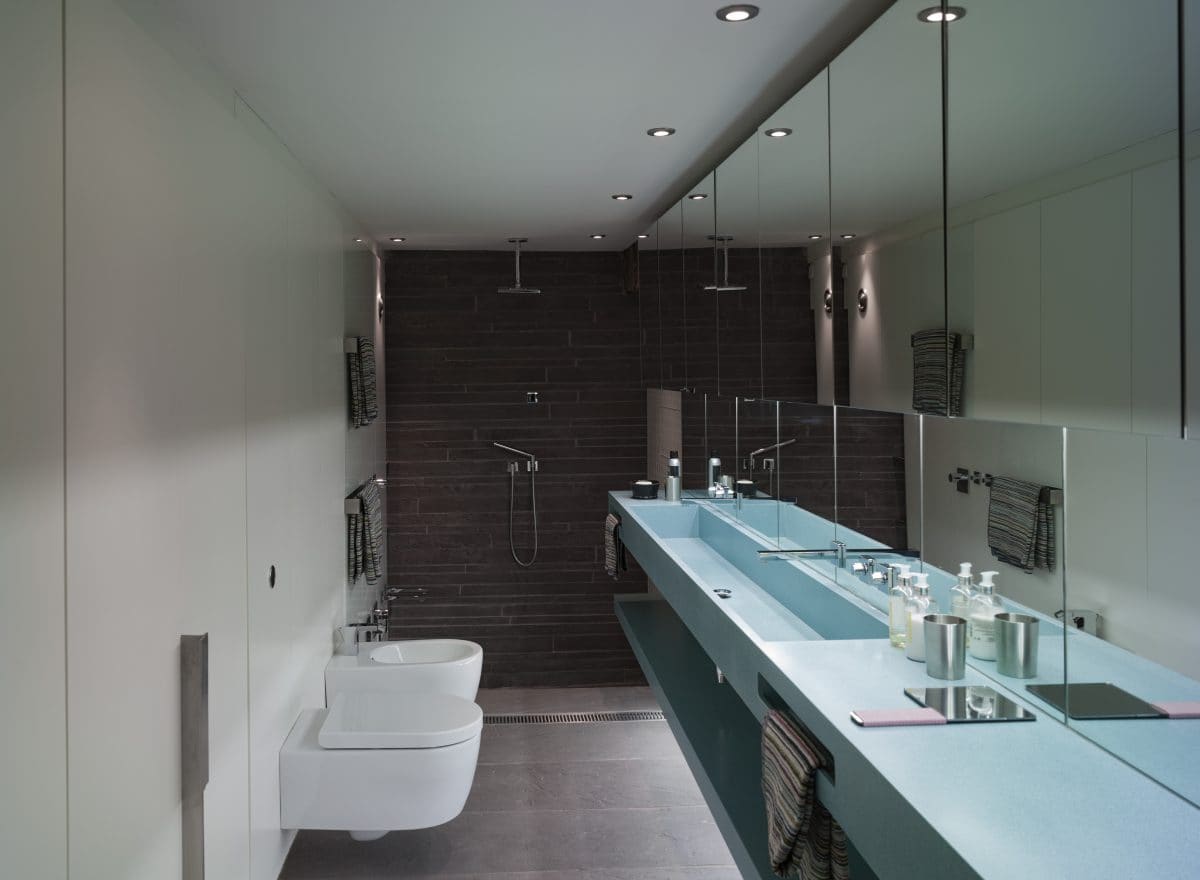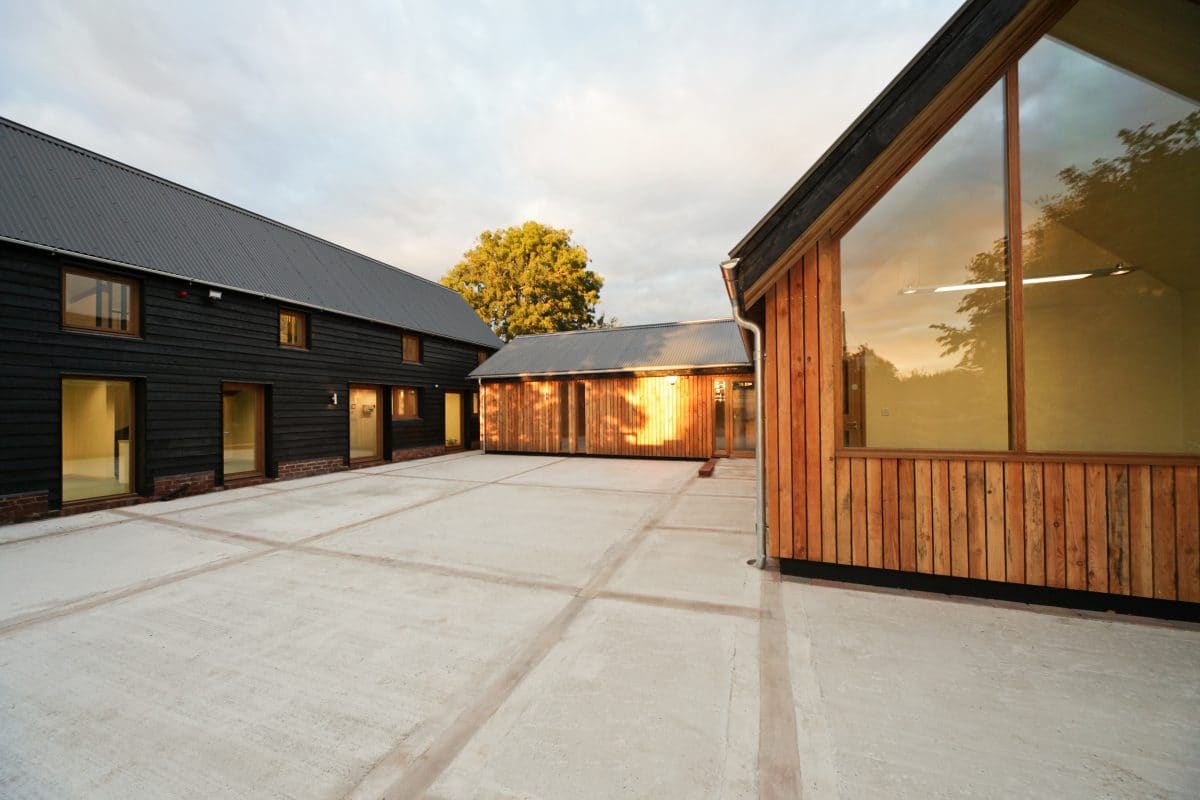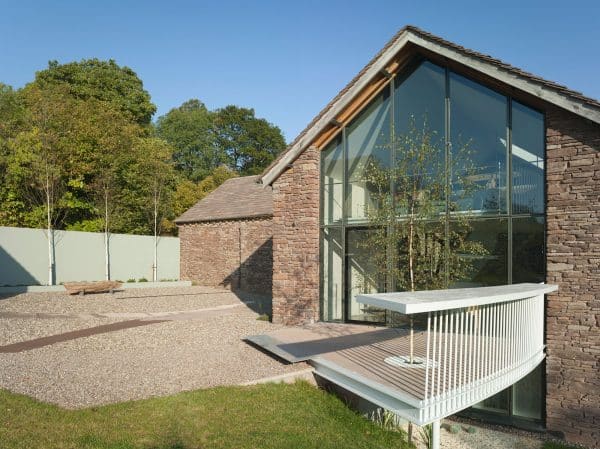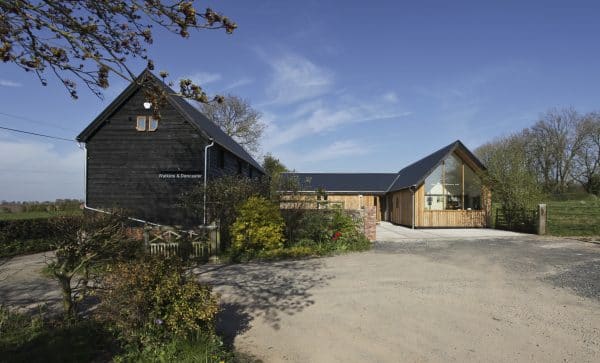A successful barn conversion relies on a unique mix of creative and strategic thinking. When you get this mix of creativity and strategy right, it is wonderfully rewarding.
The Creativity of Barn Conversions
A barn is a ‘found’ building – one that has been sitting in its landscape for years, if not centuries. Often a significant aspect of the barn is its location and its character and a key reason for the project comes from having a vision for living as part of the unique space it provides.
Therefore key to a successful conversion is creating a project that resonates with its location, conserves the character of the barn and provides a space that meets the demands of your life.
For this reason, a first step for us is an assessment of ‘place’. We ask: what is special about this building? Barns are rooted in their settings and often built using the materials that are found in the landscape. We seek to understand how the barn is part of its landscape and explore ideas with you of how to make the most of this in the project.
We then work closely with you to understand your needs and ideas. We ask: where will you enter the building? Where are the public and private spaces? Where will you eat, sleep, cook, rest and work?
We form a design that brings all of these together. We look at the barn and consider where the views are and where the sun rises and sets. By mapping your daily routine to the barn we can ensure that your activities follow the movement of the sun through the barn. In this way, the barn, its site and you can be brought together in a single coherent whole.
Throughout this process, we seek to balance the old and the new. How can we use set new ideas against the barn’s palette of beautiful aged materials? How can we introduce light sensitively and practically?

As an example, in one of the schemes we worked on, we sought to retain the integrity of the existing fabric whilst accommodating new and unique spaces. The barn was originally positioned on the site due to its relationship with a stream as a source of water. As an echo of this, we formed the bathroom from stone to connect the space with the original experience of stone and water.

In this commercial barn conversion project, a new building was required. It was to be sensitively scaled as a single storey development that was subservient to the historic barn. The design reflected the agricultural nature of the surroundings and the character of the existing barn. The pitch of the new building’s roof exactly matched the existing barn and was covered with corrugated steel while the walls are timber boarded to reference both the historic barn on the site as well as more contemporary agricultural barns found locally.
The Strategy of Barn Conversions
Converting a barn is one of the few exceptions to the general planning rule that building a new home in the countryside is unlikely to be allowed. As a consequence, there is a myriad of regulations around barn conversions. To add further complication, the way the national laws are interpreted may differ between local planning authorities.
This means plotting a course through the legislation and securing permission for a barn conversion is a complex process; often we recommend working with a specialist planning consultant who understands the legislation and the way it can be interpreted.
There are undeniable complexities around securing permission for a barn conversion. At a very basic level there are essentially two paths you can take. One is securing permission using Class Q of permitted development rights, the second is obtaining planning permission. In practice, it can be powerful to use both of these approaches to form a compelling planning case.

In Worcestershire, we worked on a project for the Netherwood Estate. The Estate had a courtyard barn and farmhouse the owners were keen to turn into assets that would support their aims. After assessing the options it was agreed the most suitable option was the creation of a fine dining restaurant in the barn together with office and training facilities that could add value to the local area. To realise this vision, additional buildings would be required and were able to demonstrate that the new buildings would be sympathetic to their surroundings and deliver significant economic value for the county. Eventually, we secured consent, which has delivered an exceptional restaurant experience.
Undertaking a Barn Conversion
The creativity and strategy of a barn conversion are the core elements of Stage One and Stage Two of our project process.
Stage Three is where all the plans come to life and the conversion and building work starts. Here, we work with you to deliver the scheme on site. We inspect the on-site works regularly so we can ensure quality and agree design details, elevating a project to the extraordinary. We manage contractual matters, take responsibility for your health and safety legal duties on site, provide financial reports and advise you on payments to your contractor. We are also on-hand to resolve any site issues.
The end result is a beautiful building that is designed around the essential nature of the original barn and its setting as well as your needs.
“The quality of the finish and confidence of approach really stood out and the [judges] felt the project team had shown respect for the history and setting of the building.”
Jury’s citation, 2011 Local Authority Building Control Regional Award for Best Conversion or Extension
See Examples of Our Barn Conversion Projects
Frequently Asked Questions on Barn Conversions
Undertaking a barn conversion is a complex – but incredibly rewarding – project. Understandably, many people have lots of questions about the process. We’ve put together answers to the most frequently asked questions we hear on barn conversions to help you understand a little more about what’s involved.
Can I convert my barn?
Maybe – but you will definitely need to secure permission first.
There are – broadly speaking – two routes to securing permission for a barn conversion. The first is under Class Q permitted development rights and the second is through gaining planning permission. In reality, they are not separate routes. Typically, even on the most straightforward of cases, we refer to both Class Q and local planning rules. The key to gaining permission to convert your barn depends on putting together a robust strategy and a strong case for why you should receive it.
Further reading
Can I convert my barn under Class Q Permitted Development rights?
Maybe.
To secure permission to convert your barn under Class Q, your building must meet a series of criteria. If it meets all the criteria, it has to be given permission under permitted development rights. If it fails any of the criteria, it must not be given permission under permitted development rights.
If your barn is considered permitted development under Class Q, you have permission to change the barn’s use from agricultural to a dwellinghouse, modifying the external appearance as needed to facilitate this.
If your barn cannot be converted under Class Q of permitted development rights, you will need to seek planning permission.
There are some hard and fast rules when it comes to understanding if your barn conversion won’t meet the requirements of Class Q and will therefore need planning permission. These include:
- if it is in an Area of Outstanding Natural Beauty (AONB)
- if it is a listed building
- if it isn’t on an agricultural unit (for example, if the barn is in a garden or paddock rather than on a farm).
Further reading
How much will my barn conversion cost?
When we first meet our clients we use our experience to give them a ballpark figure for the cost of their proposed project. It is a figure that is generally only accurate to the tens of thousands, but it provides a useful starting point for our discussions and helps to set expectations.
Further reading
How can I identify and stick to my budget?
How to control costs and save money on your building project
Why do I need a survey for my barn conversion?
When you’re planning a building project, the first thing you need to know is what you’ve got to work with. To get this information you will need a measured survey of your building as it is at the moment. From the survey you can create a set of drawings that will help you at every stage of the process from then on.
Further reading
Where can I get design ideas for my barn conversion?
The most successful changes to your space take into account the things you cannot change.
There are only a few things that cannot be changed, but they are all fundamental and your design needs to take the best advantage of them. They are:
- where the sun rises and sets
- the views
- access
Further reading
Life-changing Business Premises in Rural Herefordshire
Award-Winning Conservation of a 17th Century Barn, Herefordshire
What are the best layout options for my barn conversion?
Once the fundamentals of the design of the site are established, the choreography of everyday life is the next thing to consider. The layout of your interior spaces will impose a routine on everyone who lives there so it is important to ensure the routine you create is life giving, easy and beneficial. In a barn conversion, the design has to work for your everyday life but it also has to make the most of the natural typography of the site.
Further reading
How will Communion Architects work with me to create my barn conversion?
We work on barn conversion projects in Herefordshire, Worcestershire and Gloucestershire. The journey breaks down into five independent but interlinked Stages from start to finish.
Further reading
Resources for a successful build
Explore our resources designed to help you work with an architect and design, plan and manage a successful build
Enquire about working with us
Let us know a few details and we will be in touch as soon as we can with how we can help you with your project






